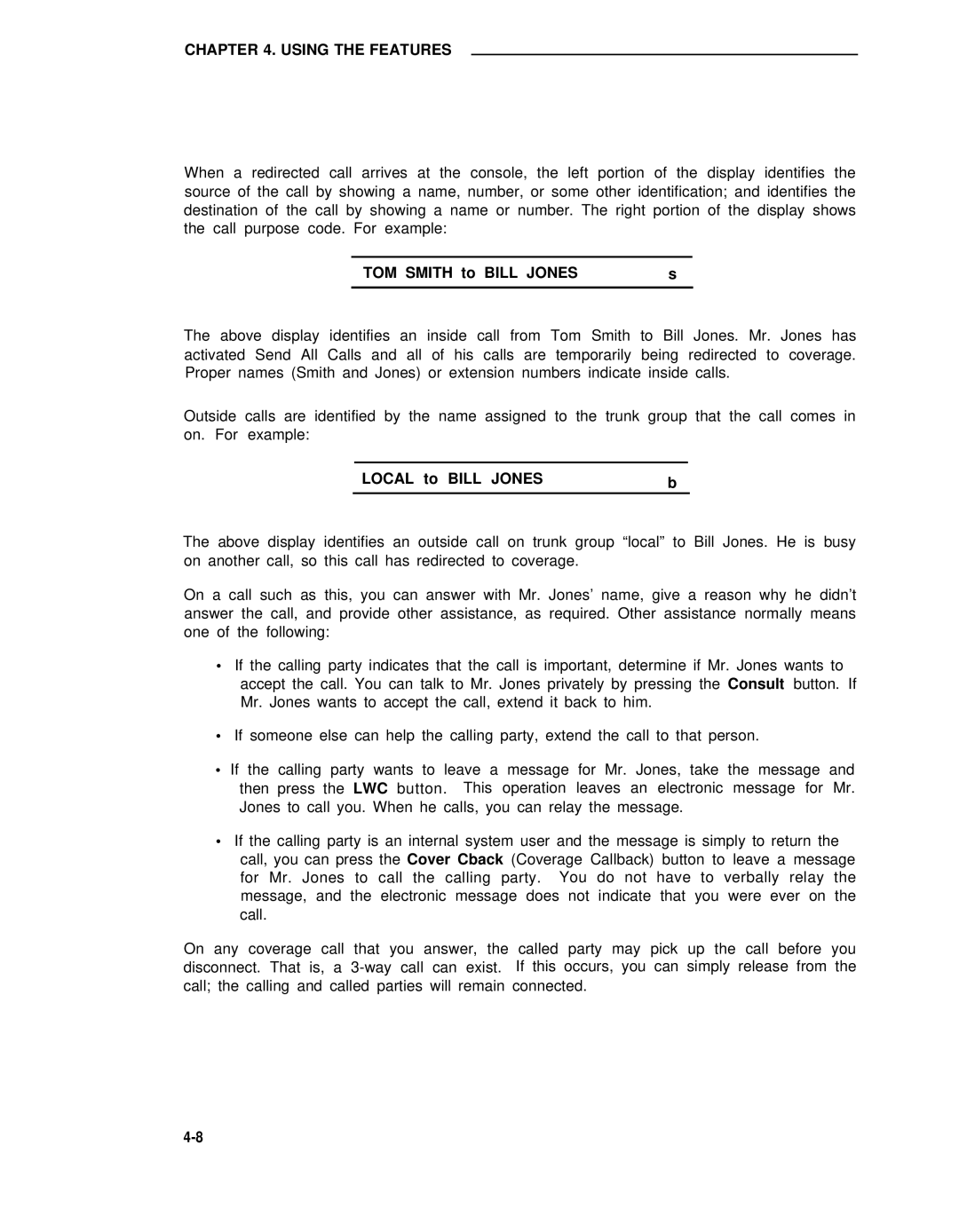
CHAPTER 4. USING THE FEATURES
When a redirected call arrives at the console, the left portion of the display identifies the source of the call by showing a name, number, or some other identification; and identifies the destination of the call by showing a name or number. The right portion of the display shows the call purpose code. For example:
TOM SMITH to BILL JONES | s |
The above display identifies an inside call from Tom Smith to Bill Jones. Mr. Jones has activated Send All Calls and all of his calls are temporarily being redirected to coverage. Proper names (Smith and Jones) or extension numbers indicate inside calls.
Outside calls are identified by the name assigned to the trunk group that the call comes in on. For example:
LOCAL to BILL JONES | b |
The above display identifies an outside call on trunk group “local” to Bill Jones. He is busy on another call, so this call has redirected to coverage.
On a call such as this, you can answer with Mr. Jones’ name, give a reason why he didn’t answer the call, and provide other assistance, as required. Other assistance normally means one of the following:
•If the calling party indicates that the call is important, determine if Mr. Jones wants to accept the call. You can talk to Mr. Jones privately by pressing the Consult button. If Mr. Jones wants to accept the call, extend it back to him.
•If someone else can help the calling party, extend the call to that person.
•If the calling party wants to leave a message for Mr. Jones, take the message and then press the LWC button. This operation leaves an electronic message for Mr. Jones to call you. When he calls, you can relay the message.
•If the calling party is an internal system user and the message is simply to return the call, you can press the Cover Cback (Coverage Callback) button to leave a message for Mr. Jones to call the calling party. You do not have to verbally relay the message, and the electronic message does not indicate that you were ever on the call.
On any coverage call that you answer, the called party may pick up the call before you disconnect. That is, a
